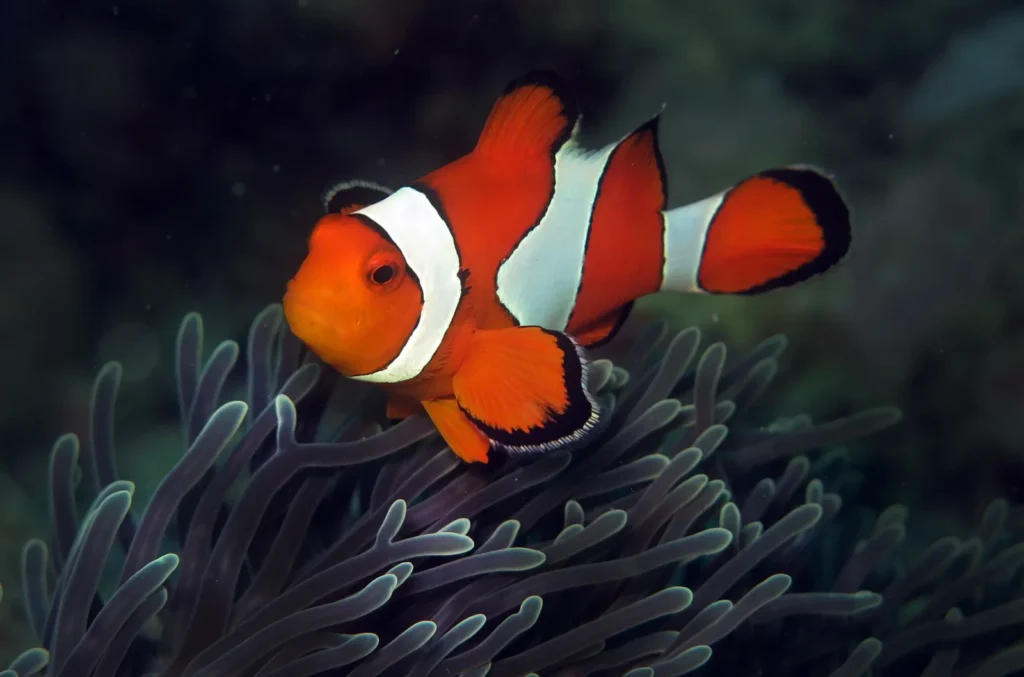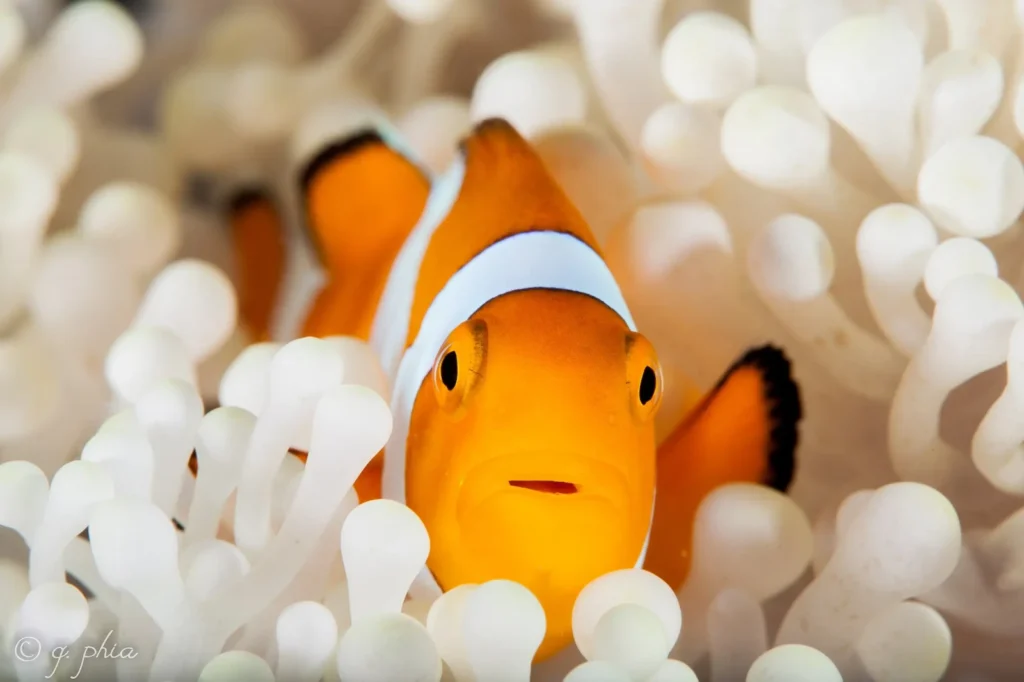Among the variety of marine fish, it stands out especially orange clown (amphiprion percula). Its bright orange color with white stripes and interesting symbiosis with sea anemones made it one of the most famous inhabitants of coral reefs.
✔ Bright coloring and unique behavior
✔ It lives in close symbiosis with anemones
✔ Popular aquarium species
✔ Can change gender
Consider all aspects of the life of this amazing fish.

Scientific classification
✔ The Kingdom: Animals (Animalia)
✔ Type: Chordal (Chordata)
✔ Class: Lucheperi pisces (Actinopterygii)
✔ Row: Perch-like (Perciformes)
✔ Family: Pomacentrovye (Pomacentridae)
✔ Gender: Amphiprion
✔ View: Amphiprion percula (Lacepède, 1802)
📌 Interesting!
The orange clown is very similar to Amphiprion ocellaris, but has thicker black edges around white stripes.
Appearance
🔹 Body shape:
✔ Oval, flattened on the sides
✔ Compact, well adapted to life among anemones
🔹 Color scheme:
✔ Bright orange body
✔ Three white stripes: on the head, in the middle of the body and near the tail
✔ Black edges around the white stripes (thicker than the white stripes). A. ocellaris)
🔹 Sizes:
✔ Average length: 6-8 cm
✔ Maximum length: up to 11 cm
📌 Interesting!
Clowns distinguish each other by a unique pattern of black edging!

Range and habitat
🌍 Where does the orange clown live?
✅ Western Pacific
Воды Waters off Australia, Papua New Guinea, and the Solomon Islands
🔹 Living environment:
✔ Coral reefs on the at depths of 1-15 meters
✔ Always lives close to sea anemones
📌 Interesting!
Amphiprion percula usually selects Heteractis magnifica and Stichodactyla gigantea like your "home".
Symbiosis with sea anemones
🔹 How does symbiosis work?
✔ The clown lives among the tentacles of an anemone
✔ Produces a special mucus shield that protects it from anemone venom
✔ Anemone gets protection from predators and food leftovers
📌 Interesting!
If the clown is moved to a new anemone, it must gradually adapt to its stinging cells.
Lifestyle and behavior
🔹 Social structure:
✔ Lives in small groups (usually 2-6 individuals)
✔ The group always has dominant female, male and juveniles
🔹 Defensive behavior:
✔ Hides among the tentacles of an anemone
✔ Aggressively defends its territory
🔹 Life span:
✔ In the wild: 6-10 years old
✔ In captivity: up to 15 years old
📌 Interesting!
If the dominant female dies, the largest male becomes a female!
Nutrition and role in nature
🥗 What does the orange clown eat?
✅ Small zooplankton
✅ Crustaceans
, Seaweed
🔹 Environmental role:
✔ Reef Cleaner-eats leftovers
✔ Supports anemone health
📌 Interesting!
Clowns can "feed" their anemone by bringing it small invertebrates.

Reproduction and development
🔹 Method of reproduction:
✔ Female lays eggs 100-1000 eggs
✔ The male guards the clutch
🔹 Development:
✔ Larvae hatch via 6-10 days
Young people first live in the water column, and then settle among the anemones
📌 Interesting!
Clowns are born as males, and later the largest male can change sex.
Orange Clown and the Man
🔹 Popularity in aquariums:
✅ Very popular species in marine aquariums
✅ Requires minimum of 100 liters of water
🔹 Industrial value:
✅ Grown in nurseries for sale
📌 Interesting!
Because of the cartoon “In search of Nemo, " the demand for these fish has increased dramatically around the world.
Species conservation and environmental threats
🔹 Population status:
✅ The species is not under threat, but the population is declining
🔹 Main threats:
Ruinuvannya coral reef destruction
Zabrudnennya ocean pollution
Wt mass catch for aquariums
🔹 Security measures:
✔ It is grown in nurseries to reduce the catch from nature
📌 Interesting!
Some countries have banned the capture of wild clowns to preserve their natural populations.
Conclusion
🐠 The orange clown (Amphiprion percula) is not just a bright fish, but a real miracle of nature, striking with its symbiosis with anemones and unique adaptations.
💡 Would you like to have such a clown in your aquarium? 🌊✨